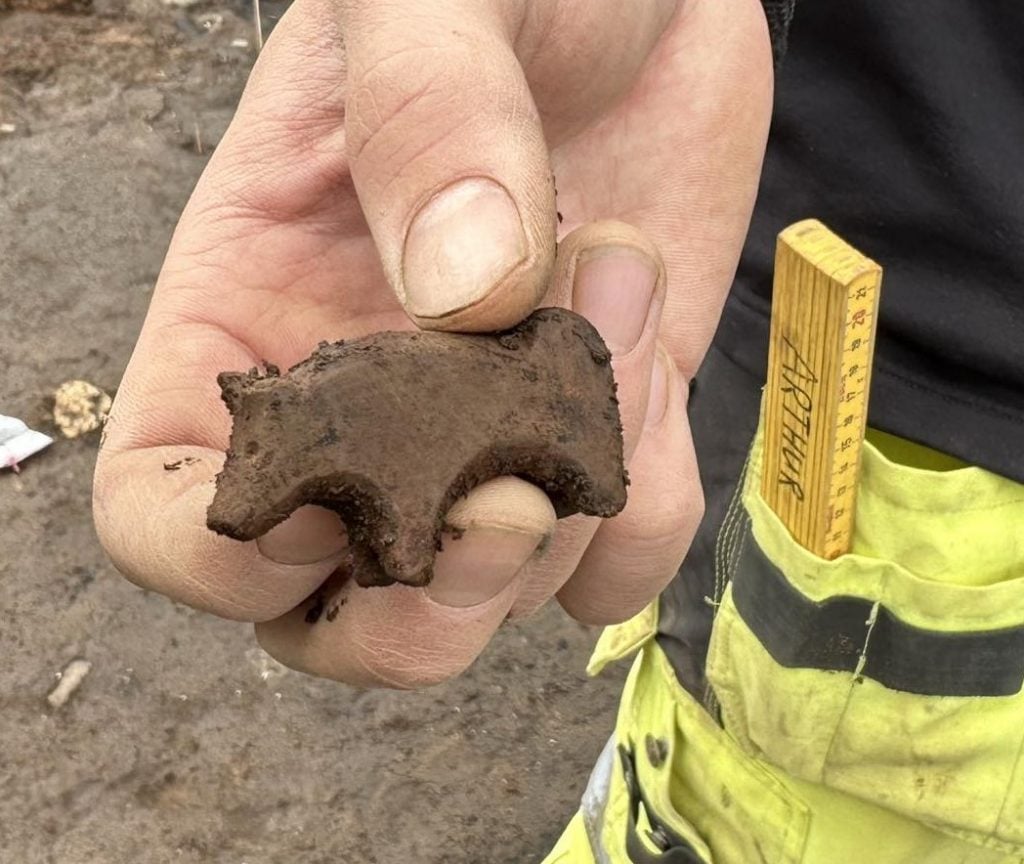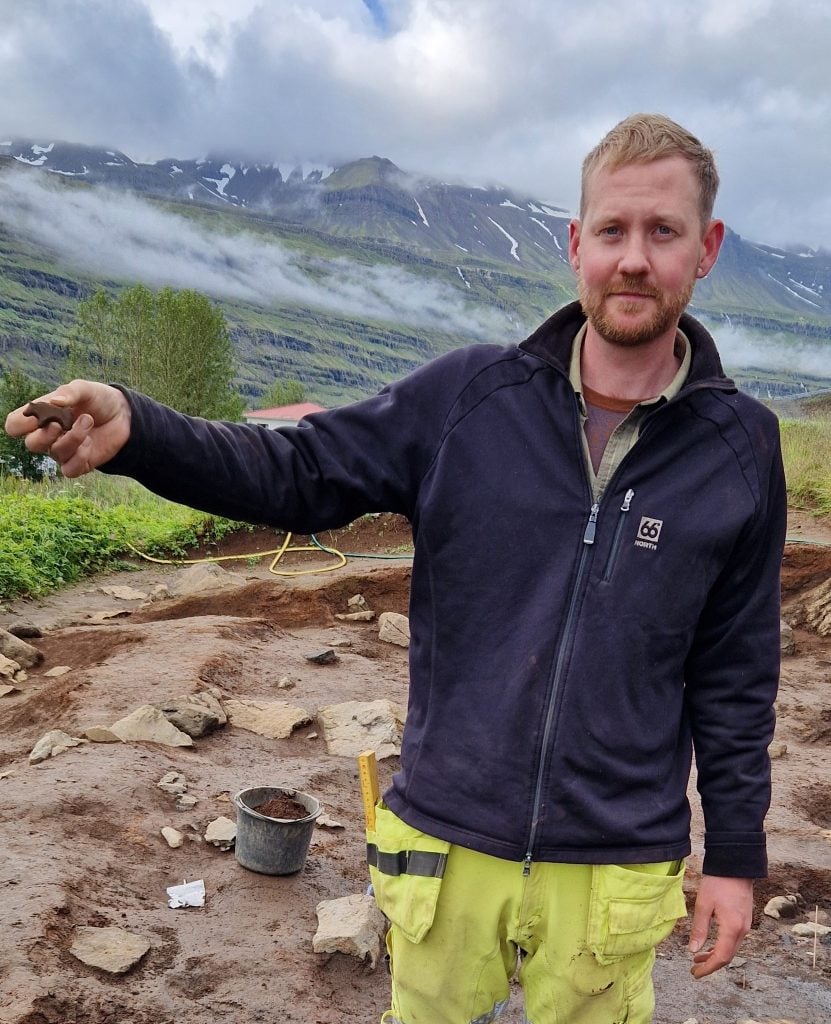Archaeology & History
It’s a Bear! It’s a Pig! It’s a Mysterious Viking Age Animal Carving
It is unclear what kind of creature the tiny toy was meant to represent.

Vikings have a reputation for violence and cruelty, but they also had a soft side. Over the years, archaeologists have unearthed a plethora of children’s toys, lovingly carved out of wood and stone. While their parents embarked on raids, Viking children entertained themselves with spinning tops, wooden swords, and miniature boats. They also had their fair share of figurines, whittled in the image of bears, boars, and other animals important to their culture.
Icelandic archaeologists have discovered one such figurine at the Fjord Seyðisfjörður archaeological site, located on a farmland near the island’s eastern coast. Made of Palagonite tuff, a basalt-like material made from water and volcanic glass, the two-inch figurine clearly represents a four-footed animal—but what kind?
Ragnheiður Traustadóttir, the director of the archaeological team, initially believed the figurine was meant to represent a pig, an animal Icelandic Vikings domesticated for meat. Two of her colleagues disagreed, arguing that the toy, with its sturdy legs and neck, looks more like a bear. Though less likely, their hypothesis is not implausible, as polar bears, while non-native to Iceland, have been spotted more than 600 times since the island was first settled between 870 and 930 C.E.
Others believe the figurine represents an Icelandic horse, a small, muscular breed descended from Scandinavian ponies that were brought to the island alongside human settlers. Still others think the toy looks like an Icelandic sheepdog, another small animal whose ancestors hailed from the shores of Scandinavia.

Archaeologist Indriði Skarphéðinsson found the animal toy on the floor of the longhouse. Photo: Fjörður – Seyðisfjörður fornleifar.
Having owned an Icelandic sheepdog for over 14 years, Traustadóttir is not convinced of the resemblance. Still, the mysterious identity of the figurine does not make the discovery any less exciting for her. “Children are not so visible in the Viking Age,” she told Live Science, “so this is an amazing find.”
The figurine is hardly the first Viking artifact to emerge from the site. In 2021, archaeologists stumbled upon a farm mound, complete with a mill and a sheep shed, which, while built between the 18th and 20th century, were found to rest atop the remnants of a Viking settlement that appears to have been covered by a landslide sometime during the Middle Ages.
Digging deeper, archaeologists went on to discover a Viking longhouse with a weaving room, where Viking women would have produced clothes and textiles. They also found animal enclosures and a trash heap. Using volcanic ash deposited around the area, they determined these facilities were used during the 11th and 13th centuries.
“There’s no other site in Iceland that has so many finds,” Traustadóttir said, saying that, in the five years since the site’s discovery, they have found nearly 4,000 artifacts, including toys and game pieces that continue to challenge the way we imagine Vikings.
“Someone sat in the winter night, in the dark,” she said, “carving chess pieces, and then [here’s] this animal for a child.”





